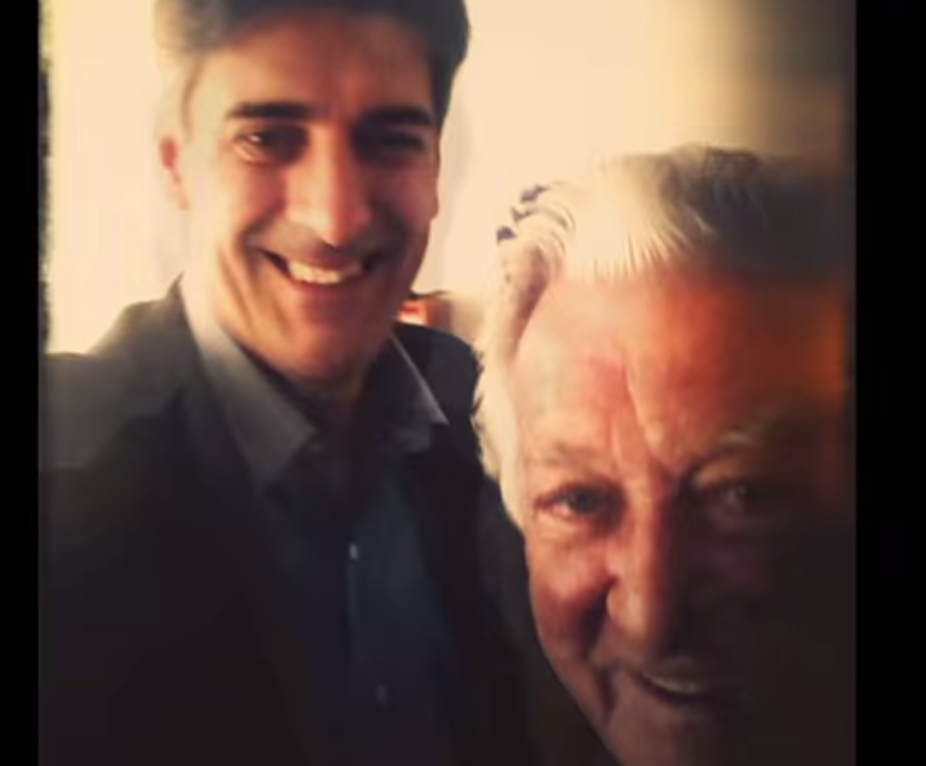Six prime ministers. Four decades. Two recessions. Australia: 24 million Not Out.
Not out in the cold, that is. As Singapore’s former prime minister, Lee Kwan Yew grimly warned Bob Hawke, a few more decades like the ‘70s and Australians would wind up “the poor, white trash of Asia”.
Lee was wrong. Australia became rich, multicultural and deeply integrated with the Asian economy. Not by accident. But not strictly by design either.
Making Australia Great: Inside our longest boom (ABC 2, Tuesdays, 8.30pm) is journalist George Megalogenis’ affectionate, politico-cultural journey through the milieu of Australia’s economic reform and renewal, from Menzies to the present.
The first episode, “Bad Hair Decades”, commences with a brief look at Australia as it was under Menzies. Complacent. Sheltered. White. Protected. Full employment. When a single-income families had dad as the sole breadwinner, mum in the kitchen, and a house with a white picket fence. It was an image that resonated so strongly with John Howard that he made it the centrepiece of his ill-fated 1988 “Future Directions” strategy.
But most of the first episode looks at the end of the long boom in Australia: the unhappy end to the optimism of Whitlamism; the gloom and doom of Fraserism; and Labor’s U-turn under Hawke and Keating, unleashing Milton Friedman-style deregulation on the Australian economy.
All the iconic images of the 1970s and 1980s are present: the Dismissal; Midnight Oil; and the Alan Bond-backed Australia II yacht bringing the America’s Cup to Fremantle.
The ABC has clearly delved deep into its impressive colour and black-and-white archives to bring the stagflationary ’70s back to life. Football, meat pies, kangaroos and Holden cars. A soundtrack courtesy of The Saints, Skyhooks and The Angels.
By the 1980s, Bond, Christopher Skase and John Elliot are the faces of the new, confident, wealthy Australia. The nouveau riche are the true winners under Hawke and Keating. Melbourne Bitter and Carlton Draught give way to Moët Chandon and Veuve Clicquot. The soundtrack shifts from proto-punk to New Romantic. John Farnham and Iva Davies sport magnificent mullets without tears.
But the ALP’s champagne economy, driven by asset bubbles and credit binges, quickly runs out of fizz, resulting in a colossal hangover: the “Keating recession”.
Occasionally, Making Australia Great really tries to do too much. Frank Sinatra being held to ransom by Bob Hawke and the Transport Workers’ Union? Enough already. We get it: unions were powerful.
Even the poor old Leyland P76 is trotted out as a “symbol of a broken economic model”. Not really. It was a symbol of a broken British economic model. The UK’s most successful exports to Australia in the 1970s were poor automotive design and a militant form of organised labour. Imitation, after all, is the sincerest form of flattery.
As a professional pedant, I have a few nits to pick: the program doesn’t mention the UK’s entry into the EU in 1973 that blew Australia’s export markets into the weeds, halving the country’s share of world trade inside a decade.
I suspect Megalogenis also misses the critical link between the US, Chinese and Australian economies. It was US outward foreign direct investment and debt-financed credit expansion that drove much of the China boom. Without US Treasury notes, eagerly purchased by thrifty Beijing, Chinese industrial production would never have achieved the dizzy heights it did between 2003 and 2008. It is US debt that funded Chinese growth (if you want to be hyperbolic, you can also argue that America shipped its old industrial plant, lock, stock and barrel, to China).
Even more importantly, it was China’s thirst for raw materials that drove the Australian boom. If Keating, Howard, Costello or Rudd truly believe they were the creators of Australia’s economic resilience, they’re fooling themselves. Canberra claims the credit, but the budgetary surpluses were Made in Beijing, pure and simple.
Our former leaders are not exactly complimentary about each other’s economic management. Hawke complains that neither Whitlam nor Fraser understood economics, but Hawke’s ACTU nevertheless demanded self-defeating, inflationary wage rises. Keating labels Hawke, “the pyromaniac who nearly set the economy on fire – twice.”
Australia, both Megalogenis and Peter Costello claim, has something to teach the world. Like what? How to have the largest household debt in the world? Locking a generation out of the housing market?
To be fair, Australia has much to be proud of. Wealth is considerable; Australians are among the richest people on earth. Multiculturalism has bred tolerance, not ethnic violence. Economic inequality is relatively low by global standards (although the wealth gap is increasing). Absolute poverty is comparatively uncommon.
Unsurprisingly, Hawke, Keating, Howard, Costello, Rudd and Swan, stake their rival claims for engineering Australia’s reform and resilience through economic triumph, turmoil and tragedy. But they would do that, wouldn’t they? When the child turns out well, everyone claims paternity.
This does become faintly annoying. It’s not the political elite who are making the sacrifices or paying the taxes. Politicians are merely over-remunerated cheerleaders standing on the side lines as the real heavy lifting is done by the overburdened, hard-working Australian labour force.
Politicians, as PJ O’Rourke rightly reminds us, “have never done anything worth a shit. They’ve merely gotten themselves elected.”
But there’s much of interest to look forward to in episodes two and three. The latter features new interviews with Rudd, Swan and Ken Henry and the fear wrought by the 2008–09 global financial crisis.
Here’s hoping there’s a happy ending. I’ll drink to that. Make mine a Moët.

